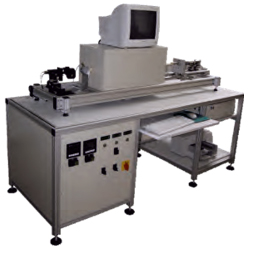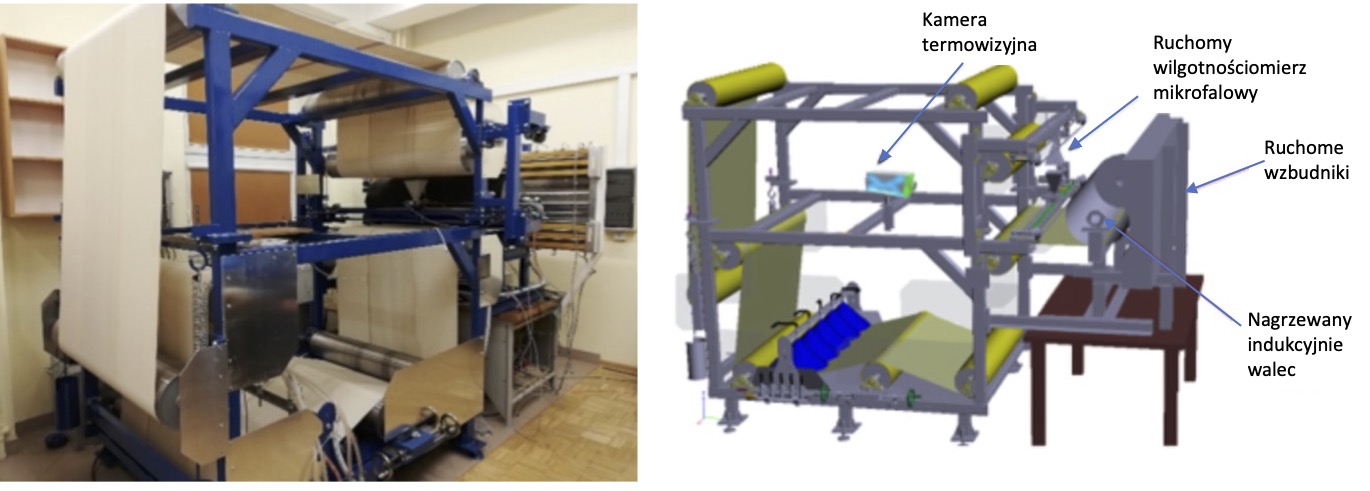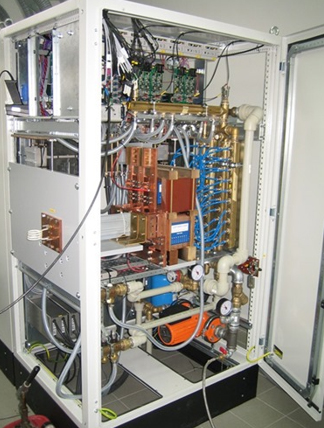The Institute's primary goal has always been to develop integrated software for industrial applications. The story began with research related to metrology and thermal technologies: Thermowet and solderability tester. Technologies related to inductive properties with dedicated software came naturally later.
In cooperation with the "Zakład Inżynierii Spjania" of the Warsaw University of Technology, the Institute of Ecological Electrothermy in Warsaw and the Industrial Institute of Electronics in Warsaw, the THERMO-WET measurement system based on processing and analysis algorithms was built at IIS, intended for automatic measurements of basic measurable quantities characterizing interfacial interactions at temperatures up to 1700°C .
As part of the research on the physicochemical properties of materials at high temperatures, a unique metrological device was developed for determining the wetting parameters - force and angle, in a wide temperature range up to 1000 °C, for various gas atmospheres. The device supports the development of new materials and wetting technologies, as well as the optimization of existing industrial processes [1].
The system of induction heating of a rotating steel cylinder is particularly suitable for the drying process (in other words, leveling the moisture of the paper web) at the final stage of its production [2] (*).
The system consists of a series of independently controlled exciters supplying energy in the form of an electromagnetic field, which is converted into thermal energy on the surface of the cylinder. This energy released in places on the roller surface determined by the automatic paper moisture control system ensures local additional drying of more humid places of the moving paper web. As a result, the distribution and the value of the moisture content of the paper web wound on the spool meet the technological assumptions.
In the semi-industrial, laboratory drying system shown in the figure below, the actual paper web has been replaced with a cotton web imitating the behavior of paper during the process of its moistening and drying. This system consists of a number of independently controlled subsystems responsible for measuring the humidity of the web, measuring the temperature at its inlet and outlet, measuring the temperature of the roll surface and subsystems ensuring automatic maintenance of humidity at a constant, predetermined level.
The simulation of random wetting of the moving cotton web is provided by a computer-controlled arrangement of a series of sprinklers located above the surface of the cotton web.
Thanks to this solution, there is a possibility of practical research on the selection of the structure and algorithms of various types of roller surface temperature and cotton web moisture regulators. This is of particular importance, because this type of systems is characterized by dynamics of heating and drying, which is unusual for thermal systems.
Innovative solutions of intelligent generators for induction heating, characterized by the functionality of energy auto-adjustment to the changing load, were developed [3](**). These solutions, based on two Polish patents, concern both single-frequency LLC resonant generators [4] and the new LCLC generator topology for dual-frequency heating [5]. In the two-frequency generator, the energy auto-adjustment has been enriched with design and IT solutions that enable the implementation of the function of controlling the ratio of the equivalent load resistance at high HF and medium MF resonant frequency (compensating for the effect of the skin effect), which is not found in any known global solution. Control systems based on the FPGA system allow for both simultaneous dual-frequency and quasi-simultaneous operation (alternating MF and HF with a total cycle time of approx. 50 ms), which enables soft commutation of connectors for both MF and HF. The results of the work were used in the prototype of the generator with a power of 100 kW and HF around 500 kHz.
Application: effective, simultaneous surface hardening of concave-convex charges, e.g. gear wheels.
[1] M. Bakala, et al. Metrol. Meas. Sys., 2017. 24: 175-184. DOI link
[2] A. Fraczyk, J. Kucharski. Appl. Therm. Eng., 2017. 125: 767-779. DOI link
[3] J. Zgraja, A. Cieslak. COMPEL, 2017. 36: 458-468. DOI link
[4] J. Zgraja, G. Lisowski, J. Kucharski, Energies 2020, 13(8), 1860. DOI link
[5] J. Zgraja. IEEE T. Ind. Electron., 2019. 66: 8308-8317. DOI link
(*) N N519 579838 “Precise temperature measurement and control system Induction heating of a rotating steel cylinder”, J. Kucharski (coordinator), A Frączyk, P. Urbanek, 2013-2015
(**) NCBiR project (PBS1/A4/2/2012). J. Zgraja (coordinator). 2012-2016



